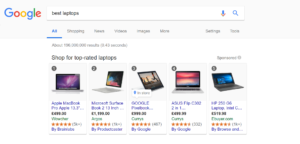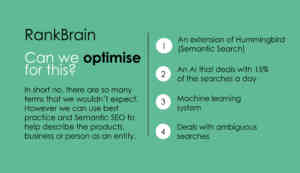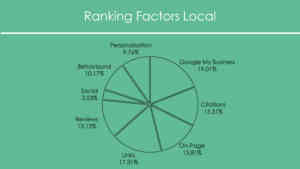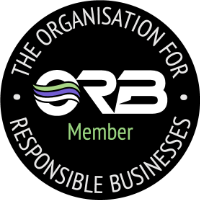How does Google & digital marketing fit into the world of modern business?
Have you asked yourself how Google fits into your business or how search has changed? Do you know about Micro Moments? What about how Google and Digital Marketing fit into the world of modern business? Then read on…
GOOGLE’S MISSION STATEMENT
‘To organize the world’s information and make it universally accessible and useful’
Google have told us what they are setting out to achieve, we have to learn how to comply and see results within this.
Google offers you platforms to use and utilise. They want you to embrace them and appear in…Google! Google My Business is incredibly important and relevant. Itshapes the internet for us. It allows us to be able to publicise and advertise your business.
Google has developed its own platform with itself – called micro moments. Micro Moments are classed as how we interact and how we search for things.
I WANT TO BUY – I WANT TO KNOW – I WANT TO DO – I WANT TO GO
They summarise EVERY search query. You do it without realising.
I want to know – user is researching but not yet in purchase mode. Regardless, you need to be present. How are you going to make sure your business is relevant to a particular search? How do you ensure you are appearing for these moments when somebody is Googling something relevant to your business. Are you relevant in GMB? Do you offer ‘what is’ information on your website? People often search for what something is, especially if it’s new. Be present at this moment by offering the information. Is that information available and consumable to Google? Are you going to appear in a search? Somebody maybe be interested in a product / service – but not yet sure. At this moment you need to be there for that search query.
I want to go – I want to go to a somewhere for a procedure researched in ‘I want to know’. Do you have an event coming up? Have you ensured the event snippet answers search queries and appears in Google?
There are ways to ensure that your website appears for each of these 2 types of search behaviours.
As well as site speed and page speed being an important ranking factor (an SEO point of view), you also need your website to present to the visitor the information they are looking for. If they don’t find it, they will leave. Your website needs to answer their search query. You need to be there, be useful and be quick. This should be taken into consideration on every page of your website. If it does, Google will pick up on this. Drive intent – if they have more questions or want more information – where are the CTAs, is there a phone number or a contact form readily available? The way we search has evolved and with it the way we consume data. It takes seconds to make a decision to buy or use a service or decide not to. We’re natural browsers.
For example, you’ll see an advert and you’ll Google whatever it is. Before you realise you’ve gone on a Google trail. Adverts create search intent or what Google coins as Micro Moments. How do you appear when somebody is searching for somebody else’s product or service? Locally or nationally. Search intent and Micro Moments are around us all the time. Ask yourself how are you going to best display and present your website? How do we advertise ourselves and how do we get the message out there? There is sometimes no value in optimising for a keyword you think is relevant. If no one is Googling what you think they’re Googling, what do you do?
Create demand using Micro Moments! Associate yourself with a brand search. It’s not technical, it’s clever SEO. Brilliant marketing made simple!
Google associates a search phrase with a brand. For example, Google ‘trainers’ and Nike will appear. How? Not just because of SEO, but because of the brand. Look at keywords, drive search intent but make sure that search intent is associated with my brand. This isn’t on-page SEO. It’s a little more out of the box. Email marketing drives search intent. More relevant now more than ever (despite GDPR). List building is even more relevant. It’s no longer adding generated leads to a marketing list and market to them. Then people thought we don’t need an email marketing list, we’ll do some social media or SEO and paid advertising. Lists have got lost and forgotten. You can market to these contacts. Drive search intent and so much more. Build the lists, use them and repeat.
It’s about frictionless user experience.
If they don’t find what they’re after – they’re gone and won’t convert. You have 3 seconds to show them the information they want and need. Or, you have 3 clicks to deliver what they are searching. Particularly important for e-commerce sites.
Local search and rich snippet data. Make sure you’re being found in local searches. Paid advertising isn’t so easy, especially if a budget is tight. However, if you have a good Google Ads campaign set up properly, it shouldn’t be costing you money. It should be making you money. In a search, ads head the page followed by organics – appear everywhere. If you’re not, others will. They’ll even bid on your brand and name because you’re a competitor! You’re just bidding on the keyword. Bid on keywords associated with your competitors – including the brand name but obviously product specific.
Why shouldn’t you show up if it’s an I want to know moment? Brand and keyword marketing is rife. The only thing not allowed is to include the competitors brand name in your ad. You’re bidding on keywords to show up in search – that isn’t unethical – it’s just marketing against one another! Set up Google Ads to strategically generate new business.
Reviews are important – you can source these yourself.
Consumers would happily pay more for something with positive reviews. Drive intent by being highly rated. Consumer mentality is finding an expensive product, then find a cheaper alternative with good reviews.
Content – make it relevant, make it engaging, make it frictionless – give it a purpose. Ask yourself does it answer a question someone may be asking? Don’t blog for the sake of it. If someone visits your website and it’s full of poor content they’ll bounce – they’ll leave. That’s bad SEO.
Don’t forget to measure the customer’s journey across multiple devices. Someone may quickly look at something on a mobile but then research properly later on a tablet of a computer.
Gone are the days where you specifically use a location in a search – especially locally. Google has data. It knows where you are (IP address) so you don’t need to tell it anymore. Does your website appear in a ‘near me’ search?
You can make changes to your website and tell Google you’ve made the changes to index them faster.
Give customers what they want.
Informational intent – navigational intent – transactional intent – commercial investigation
How can you address each of those scenarios? More people will be undertaking informational intent as opposed to transactional intent (ie, Googling a product and buying it). So how can you help them through this process?
The marketing funnel has become redundant because of the consumer’s behaviour and search behaviour.
Researching in order to make a purchase. Make sure your business is visible for the search queries. The consumer becomes an ‘expert’ to determine the product they want to buy through their online research. The process of buying is no longer linear.
Searching after a purchase has been made. Consider what you can offer AFTER a purchase has been made. If it doesn’t apply to your business, find a way. Maybe you should offer something after a purchase. How can you be present for other touchpoints? It’s not only about selling, it’s about brand awareness. Create search intent and build value. All relevant for SEO.
HOW DOES GOOGLE DEAL WITH DATA?
Consider all this from a marketing perspective, not just an SEO perspective. It will change the way you market your business. Social media is the obvious one in trying to drive them to your website or drive them to search. But do you want them to go to your website straight away? Consider a social media campaign about what a consumer does AFTER they have made a purchase. How can you then sell what you’re offering? What is the value of this? They’ll refer you.
Google uses machine learning to better perform searches. For example, if you Google something in the search bar, and then search for something else, Google will throw up other search queries related to these searches.
An example of this: a UK fan of the Denver Broncos.
You could Google the word Broncos and Google will throw up NFL team. You ‘re interested in travelling to see them, so you Google ‘flights’… Google will recognise that you are interested in specifically a flight to Denver, so will present this to you. It’s learned and pieced together the queries, seamlessly presenting you information that you didn’t realise you were looking for or without specifically searching for it. Airlines will have recognised this so will be present in these types of searches. This doesn’t just apply to international searches, it’s happening locally. Google uses an algorithm call Rankbrain. A machine learning algorithm. It analyses millions of search queries to see which ones perform better than others. Passing and failing queries. Not quite artificial intelligence yet, but getting close. It makes sure that it gives you the best search results for your search query.
Remember Google’s Mission Statement? They’re continuously improving it and that’s what we need to be aware of.
I want know moment:
You don’t need to be top of Google, you just need to be sure your data is correct, accurate and relevant to be present. Think of all the Micro Moments. Couple this with good SEO. Ensure your content is structured in a way to appear in the featured snippets in searches. As you know, the further down you are in search results, the less likely people will click. Capture leads wherever possible so within these results, ensure you have clear CTAs, contact forms and phone numbers.
Mark up your data to include upcoming events. Great SEO and will benefit you in search listings. Even if you’re not top, your search result will be more appealing to click as the data is presented front and centre. However if you are featured, Google won’t necessarily redirect you to a website – it will keep you on Google. How? Let’s book a hotel in Leicester…
Google ‘Hotels in Leicester’ – a number of accommodation options are displayed – click one, for example Ibis – you don’t go to Ibis’ website – you’re still on Google – continue to book a room – you’re still on Google – 3 clicks and we’re still on Google.
Google has taken your information and presents results in the best possible way for the search query. So how does SEO fit into this? You need to ensure you are featured in these new results pages and format. You may find a decrease is website traffic but there is no loss in sales. Don’t get too hung up on figures if you find this. Don’t correlate traffic figures with sales. As you’ve seen there are a number of factors that will affect this without negative results.
PRODUCT SEARCH & SPONSORED ADS
Organic results are getting harder to achieve as your result will be underneath what Google offers. Consider how you can best present yourself to Google to appear in these queries.
Knowledge panel – part of Google My Business
However, we noticed a traffic drop off to our clients’ website. We discovered that all the information that was being searched for was already being presented within Google searches. People were booking and calling from the knowledge panel. It’s no longer imperative to carry out a transaction on a website anymore. As long as you are present in search, you’ll benefit. Embrace GMB and Google Posts. Capturing visitors before they even get to the website. Managing expectations. Not sure about Google Posts? We’ve included a ‘how to’ guide in our takeaway literature.
Do not overlook the importance of reviews. You can mark up your reviews data to appear in search listings. If you want to approach people for a review, follow these simple steps:
Furthermore, Google your business, scroll down in the knowledge panel on the right and click ‘Write a review’ – copy and paste the link (it is long so we suggest shrinking the link for example using https://goo.gl/ – when this is clicked, they have been directed to the review submission pop up – all they need to do is rate you and leave a review. Be selective, especially if you’re sending out a request en-masse. You’ll have to manually manage who has and hasn’t left a review and it becomes laborious. Don’t forget local citations – Yell, Yelp etc.
Google is taking marked up data from the website and presenting it in the knowledge panel.
Regular algorithm updates determine and affect how you rank within Google, 200 – 300 factors that affect your website’s SEO.
RANKBRAIN
Rankbrain, machine learning is the third most influential ranking factor – how people are searching for you, how they’re interacting with you.
Google is constantly updating. Gone are the days of a timeline of named algorithm updates. They are now happening all the time. A continuous process. RankBrain is becoming more and more relevant.
You need to understand that your data is better presented – now more than ever. You are an entity – unless you tell Google what that entity is – it has no idea.
Does Google adhere to its Mission Statement? They said in 1998 they would set out to do what they are doing today. Now. But better. Better than they’ve ever done it.
RANKING TIPS & RANKING FACTORS
LOCAL RANKING FACTORS
You can do this yourself – but make sure everything matches!
You can watch the talk in full over on our Facebook page
















